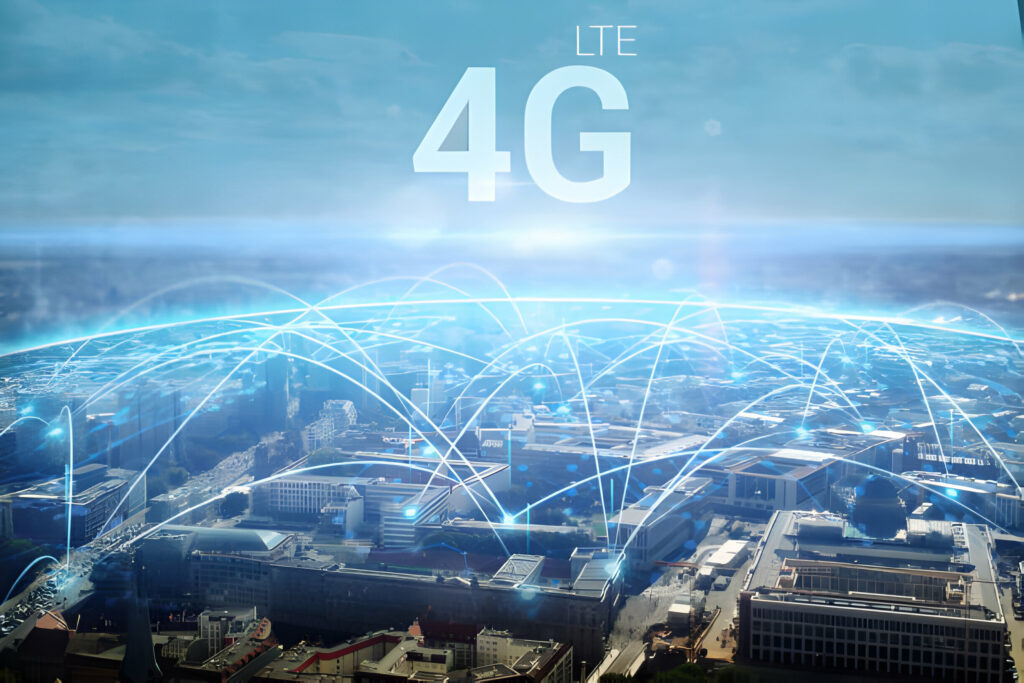Mobile users today expect fast and reliable connections wherever they go. While 3G brought the internet into our pockets, 4G LTE took mobile broadband to the next level with blazing speeds that rival fixed broadband. So, what is LTE and how does it enable those lightning-fast downloads? This guide will walk through the basics of 4G LTE in simple terms to help readers understand the technology powering modern mobile networks. We’ll look at how LTE delivers data much faster than 3G, the spectrum bands used, and what you need to access 4G speeds. Whether you’re curious about the acronym or want to know why LTE is often called 4G, read on for a simple overview of this advanced network technology that transformed mobile broadband.
What Is LTE? An Introduction to 4G Network Technology
LTE is a type of wireless technology that provides faster data speeds than previous generations. LTE is the latest standard for wireless network technology that provides faster data speeds and more stable connections. Compared to 3G networks, LTE employs a distinct radio technology, enabling more efficient data transfer.
Faster Speeds and Lower Latency
LTE networks have significantly faster data speeds than older 3G networks. 4G LTE can provide download speeds of at least 10 times faster than 3G. LTE also has lower latency, which means less delay when loading web pages or streaming media. The faster speeds and lower latency of 4G LTE allow you to do more on your mobile devices like stream HD video, play online games, or video chat without interruption.
Increased Capacity and Connectivity
LTE uses innovative methods to make better use of the available bandwidth, letting you connect to the internet faster and more reliably. This means LTE can handle many more connected devices at once, even in dense, populated areas. LTE networks also use a flatter architecture with fewer layers that require processing, so signals can travel faster with lower latency.
Widespread Availability
Major wireless carriers have spent many years building out and upgrading their networks to provide 4G LTE coverage for most of the population. As of early 2020, LTE availability now covers over 99% of Americans. The increased availability of 4G LTE, along with its enhanced capabilities over older network technologies, has made many exciting new technologies possible on mobile devices, the most impactful of which is real broadband access that provides desktop-like web surfing and streaming media on the go.

How LTE Improves Latency and Data Speeds
LTE (Long Term Evolution) technology provides significantly faster data speeds and lower latency compared to older 3G networks. LTE’s upgraded infrastructure and advanced antenna technologies allow for faster transmission of data between cell towers and connected devices.
Faster Data Speeds
LTE networks can achieve download speeds of up to 100 megabits per second (Mbps), nearly 10 times faster than 3G’s theoretical maximum of 14 Mbps. In reality, LTE networks often deliver between 5 to 12 Mbps, still substantially faster than the typical 3G speed of 1 to 2 Mbps. These speed boosts allow you to stream music and video, download files, browse the web, and run data-intensive apps much faster on an LTE network.
Lower Latency
Latency refers to the time it takes for data to travel between your device and the network. LTE’s upgraded technology achieves a latency of around 50 milliseconds, compared to 3G’s latency of 100 to 500 milliseconds. This means that on an LTE network, web pages load almost instantly, streaming media plays without buffering, VoIP calls connect right away, and online games respond with virtually no lag.
Carrier Aggregation
LTE uses a technology called carrier aggregation to combine radio frequency bands and increase bandwidth, which contributes to faster speeds and lower latency. Most LTE networks rely on two or three frequency bands, providing more bandwidth than a single frequency. As carriers add more bands, LTE networks get even faster. Some LTE networks now achieve theoretical download speeds of 300 Mbps or more using carrier aggregation.
LTE’s combination of faster data speeds, lower latency, and wider bandwidth has enabled a new generation of connected experiences on mobile devices and beyond. Everything from streaming 4K video and multiplayer gaming to smart home automation and self-driving cars becomes possible with the power of 4G LTE connectivity. While 5G is still on the horizon, LTE networks continue to evolve to meet the growing demands for faster data and more advanced digital services.

LTE Network Reliability and Coverage
The LTE network is considered very reliable due to several factors. LTE uses a different radio technology than older 3G and 2G networks, which makes it less prone to interference. Robust Technology LTE uses OFDMA (Orthogonal Frequency Division Multiple Access) for downlink transmissions from towers to devices, and SC-FDMA (Single-Carrier Frequency Division Multiple Access) for uplink transmissions from devices to towers. These technologies are very efficient and resilient, allowing LTE networks to provide consistent high-speed data connections even when many people are using the network at the same time.
Wider Coverage
Carriers have spent billions of dollars upgrading their networks to provide LTE coverage in more areas. LTE signals also propagate over longer distances than older network technologies, so fewer towers are needed to cover the same geographic area. Many rural and suburban areas that previously only had basic voice service now have access to high-speed LTE data connections.
Redundancy Built-in
LTE networks are designed with redundancy in mind. Multiple towers will cover the same area so that if one tower goes down for any reason, devices can switch to another tower without interrupting service. Critical infrastructure like routers and switches is also redundant. This level of redundancy helps ensure that LTE service remains operational even if parts of the network are damaged or non-functional.
While LTE technology and coverage have significantly improved network reliability and uptime, no technology is perfect. LTE networks can still go down for a variety of reasons like natural disasters, power outages, or hardware failures. But in general, you can count on LTE networks to provide consistent high-speed data connectivity in most areas and during most circumstances. The combination of robust technology, wide coverage, and built-in redundancy gives LTE networks a level of reliability that simply wasn’t possible with older cellular network standards.

Security and Privacy Concerns With LTE Networks
With the rise of LTE networks, some concerns have been raised about security and privacy. Data interception Since LTE networks transmit data over radio signals, it is possible for third parties to intercept communications and access unencrypted data. Hackers have demonstrated the ability to intercept phone calls, text messages, and internet traffic on LTE networks. To address this concern, LTE networks support encryption standards to help protect data in transit, but encryption has to be implemented properly by network operators and device makers.
Location tracking
LTE networks can pinpoint the location of connected devices to aid services like emergency response location and navigation apps. However, some people worry that location data could be accessed by third parties without users’ consent. Laws like GDPR give users more control over their data and require consent for location tracking, but location data may still be vulnerable if not properly secured.
Subscriber profiling
LTE providers have access to details about subscribers’ internet usage, location, call records and more. This data could potentially be used to profile subscribers and their behaviors. While providers claim that subscriber data is kept private and secure, some people argue that stronger laws and regulations are needed to prevent misuse of subscriber data.
To address security and privacy concerns with LTE, network operators, and device makers must ensure encryption is properly implemented, give users more control and transparency over their data, and strictly limit access to subscriber data. With strong safeguards and oversight in place, LTE technology can offer connectivity benefits while still protecting users. However, vigilance is required to minimize vulnerabilities that could put people’s security and privacy at risk.
Conclusion
So there you have it – a simple look at what LTE and 4G networks are all about. From understanding how LTE provides faster speeds and lower latency compared to 3G, to learning about how LTE networks are structured into cells with base stations, this guide covers the key points in easy-to-understand language. While the ins and outs of mobile network technology can get quite complex, the main thing to remember is that LTE represents a big leap forward, bringing significantly improved performance and reliability. Whether you’re a casual user looking to understand 4G better or a network engineer interested in a high-level overview, hopefully, this article gave you a helpful introduction to the world of LTE and 4G connectivity.








